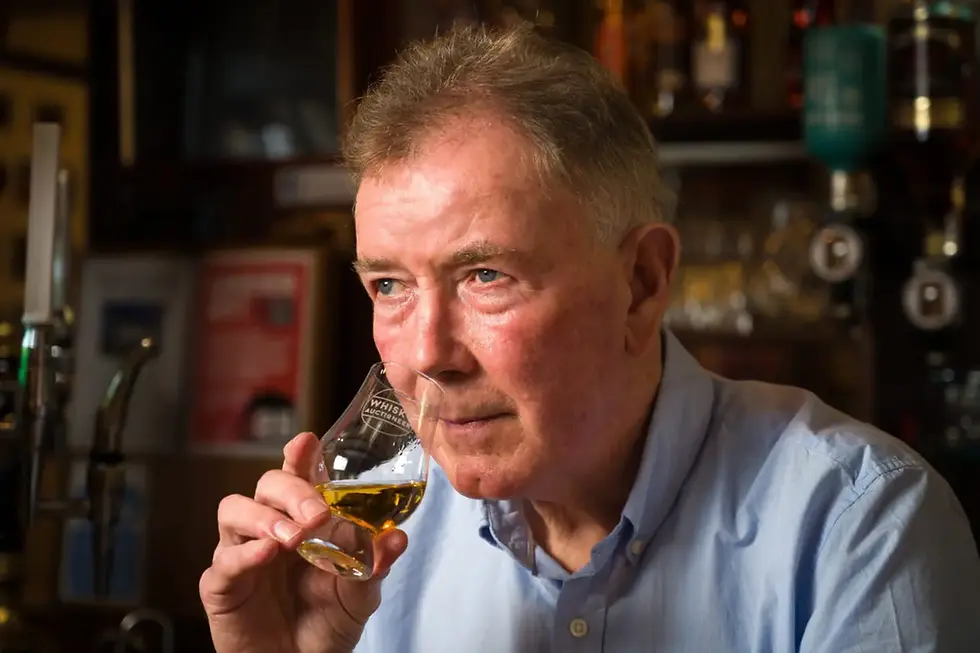FIRE AND SMOKE: A DEEP DIVE INTO THE ORIGINS, PRODUCTION, AND UNIQUE TASTE OF PEATED WHISKY
- Danny Pedroni
- Sep 4, 2024
- 3 min read

Peated whisky, with its unmistakable smoky character, is one of the most polarising flavour profiles in the whisky world.
Some drinkers can’t get enough of its boldness, while others shy away from its intensity. But what exactly is peated whisky, and how is it made?
Let’s explore the fascinating history, production process, and tasting notes of peated whisky, along with the regions famous for crafting these smoky spirits.
What is Peat?
Peat is an ancient organic material formed in waterlogged environments over thousands of years.
Made up of partially decomposed plant matter such as mosses, grasses, and fungi, peat develops in boggy landscapes where water slows down the full decay of vegetation.
Whisky makers cut peat from these beds, which can be several feet deep, and dry the cut blocks for months before they are ready to use.
Defining Peated Whisky
Peated whisky refers to any whisky produced from malted barley that has been dried over a peat fire. This process infuses the barley with smoky, earthy flavours that define the unique character of the whisky.
The Origins of Peated Whisky
The use of peat in whisky production began in Scotland’s remote regions, where peat was historically the primary fuel source for drying malted barley.
This necessity gave rise to a distinct style of whisky that has since become a hallmark of Scottish tradition, particularly in regions like Islay.
Tasting Notes of Peated Whisky
The taste of peated whisky is often described as reminiscent of a campfire in a glass. Beyond the smokiness, you might detect earthy, medicinal notes, along with hints of seaweed, iodine, and brine.
Each sip can evoke images of rugged coastlines and windswept moors, offering a tasting experience unlike any other.
How Peat Shapes Whisky Production
When peat is burned, it produces thick, aromatic smoke with minimal heat. This smoke is what gives peated whisky its characteristic flavour.
As the malted barley dries over peat fires, it absorbs phenolic compounds from the smoke, which are then carried through the distillation process to the final product.
The Peating Process in Detail
The journey of peated whisky starts with soaking barley in water, allowing it to germinate. Once sprouted, the barley is laid out on a malting floor or in a kiln, where it is dried using a peat fire.
The smoke from the burning peat envelops the barley, imparting the distinctive smoky profile that defines peated whiskies.
Measuring the Smokiness: The PPM Scale
The phenol content of peated whisky is often measured in parts per million (PPM), indicating the level of smoky flavor present.
While most peated whiskies fall within a PPM range of 20 to 90, some like Bruichladdich’s Octomore series push the boundaries, reaching phenol levels well above 300 PPM.
Where Peated Whisky is Made
Islay, a small island off Scotland’s west coast, is renowned for producing some of the most intensely peated whiskies in the world. Distilleries like Ardbeg, Bruichladdich, Lagavulin, and Laphroaig have become legendary for their bold, smoky spirits that capture the essence of Islay’s peaty landscape.
Ardbeg is celebrated for its robust, smoky single malts that evoke maritime bonfires. Ardbeg 10-Year-Old is a must-try, blending smoky peat with brine and a hint of citrus.
Lagavulin offers a refined balance of peat and coastal influences, best exemplified by the 16-Year-Old, known for its rich, smoky character complemented by dried fruit and caramel.
Laphroaig brings a medicinal touch to its peated whiskies, with a unique peat-smoking process that occurs before drying. The Laphroaig 10-Year-Old stands out with its bold peatiness intertwined with seaweed, salt, and vanilla.
Peated Whisky Beyond Islay
While Islay is the epicenter of peated whisky, other Scottish regions like the Highlands and Speyside also produce peat-influenced whiskies, though typically with milder, earthier flavors. Peated whiskies are also crafted in other countries, including Japan, Ireland, and the U.S., each adding their unique twist to this smoky tradition.




Comments